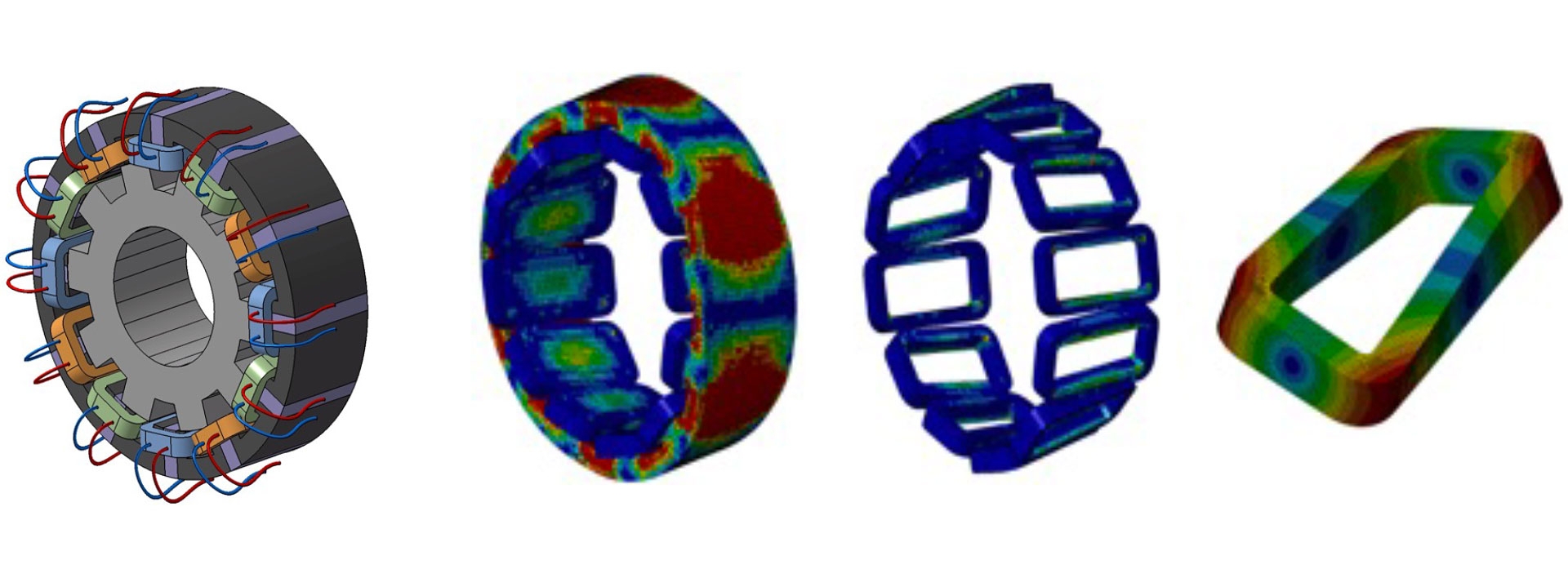STAN
RO4 : Modelling and simulation of multi-scale/model/physical problems
Activities
This research operation aims at proposing innovative methods to pose, analyse and solve problems in which interactions can be multiple. We are particularly interested in the couplings between physics, models, scales, regimes, bodies, data, etc., which must be taken into account with precision in today's design approaches, but even more so tomorrow. The aim is to propose enhanced methods, based on the notion of "interface" in the broad sense between scales, models or physics, while integrating, as far as possible, the environmental impacts. The work carried out concerns both the expression of "connection" and exchange conditions at the interfaces, and the development and implementation of algorithms for solving the coupled problems obtained, in synergy with the other ROs and teams.
A first line of research concerns the coupling of continuous or discrete/particle mechanical models that may be based on different kinematics (volumetric, plate, beam, etc.) using volumetric or surface connection techniques. The Arlequin method thus offers a general framework for the volumetric coupling of models. This technique, initiated in the laboratory, was designed to deal with problems in which several "zones" of interest can be distinguished and require different levels of analysis. The term "zones" should be understood in a broad sense, since they can be different numerical models whose fields can be mixed and accommodated together. The method has been the subject of many developments, such as the simulation of additive manufacturing processes (SLM type, with aspects of transient thermo-mechanics with phase change), the design of multi-material, architectural load-bearing walls (meeting fireproof standards), the modelling and simulation of micro-contact problems (behaviour of micro- or nano-electronic components), or the control of dynamic crack propagation. Mortar-type methods are also studied to carry out local/global analyses allowing the surface coupling of homogeneous continuous models and zones of interest describing the microstructure at the fine scale of heterogeneities. The underlying issues of model calibration and homogenisation to ensure scale transition are also crucial. The modelling of more complex surface interactions within assemblies, such as frictional contact or damage, is also widely studied. A second strand of activities focuses more specifically on the coupling between physics in order to model, for example, fluid-structure interactions, magneto-mechanical or thermo-mechanical couplings. To this end, the LATIN method offers a particularly suitable and flexible formalism for solving these multi-physical problems. The resulting solving algorithms are very similar to those developed in the other ROs, from which we fully benefit here.
Manager

STAN team
Hachmi BEN DHIA
University Professor
Head of the Modelling and simulation of multi-scale/model/physical problems research operation
